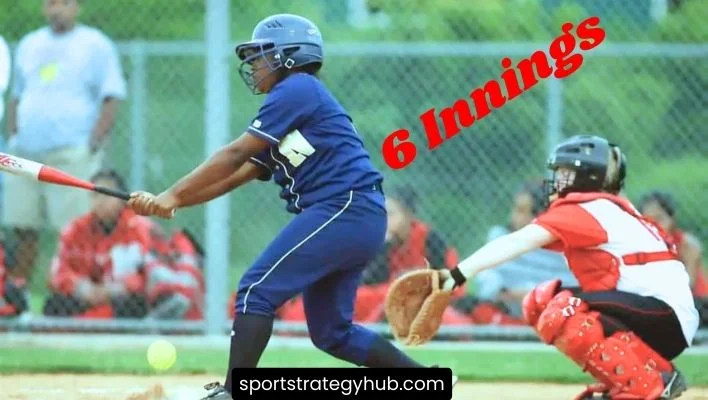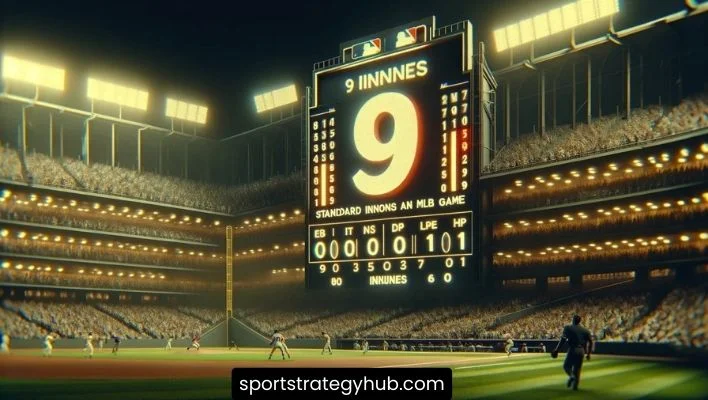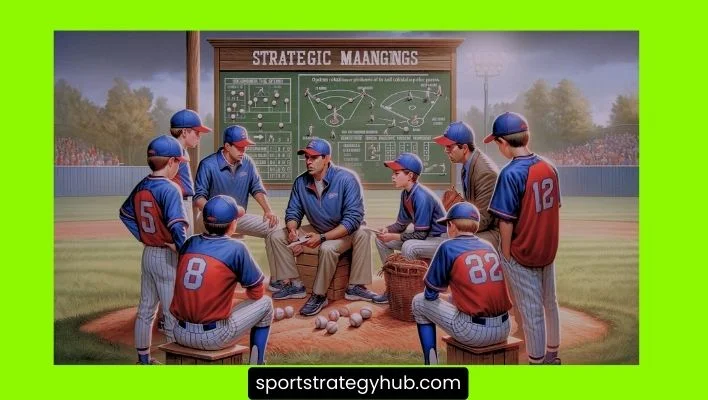How Many Innings in Youth Baseball: Innings in World Series
In this complete guide, we address “How Many Innings in Youth Baseball” by venturing into the realm of youth baseball to uncover the innings framework. We aim to clarify their role and why they matter. Additionally, we review how many innings are typically seen in various leagues and contests. We aim to equip you with understanding regarding innings in youth baseball. This knowledge is crucial for parents, coaches, and young athletes. It’s designed to aid you in understanding the game better, ensuring you feel more assured and knowledgeable as you engage with youth baseball.
Understanding the Basics of Innings in Youth League Baseball
Grasping the fundamentals of innings in youth league baseball is essential for young players and their supporters. Each game is divided into sections called innings, where teams alternate between batting and fielding. Typically, youth leagues have a set number of innings to ensure games are manageable and enjoyable for the young athletes. Understanding how innings work helps players develop strategic thinking and improves their overall game experience. This knowledge is not only crucial for players but also for parents and coaches, as it enhances their ability to guide and support the team effectively.
The Purpose and Significance of Innings in the Game
Innings are an essential component of baseball, serving both a strategic purpose and a developmental one for young players. Each inning represents a turn at bat for each team, allowing them to score runs and showcase their skills on the field. It offers a well-organized structure for gameplay, guaranteeing fairness and equal chances for all teams.
From a developmental standpoint, innings allow young players to understand the flow of the game, learn to work as a team, and improve their skills in various aspects of the sport, including hitting, pitching, and fielding. It gives them the chance to practice their techniques and gain valuable experience that will contribute to their growth as baseball players.
The Standard Number of Innings in Youth League Baseball
Little League games usually span six innings. This uniformity promotes consistency throughout leagues and ensures a fair gameplay experience for every team participating. It allows for a reasonable duration of the game, ensuring that it can be completed within a reasonable timeframe. Yet, it’s worth mentioning that innings can differ in specific divisions or leagues.

How Many Innings in Youth League World Series
In the prestigious Youth League World Series, the number of innings played remains the same as in regular youth league play. The series showcases the top teams from around the world, competing in a tournament format to determine the ultimate champion. The six-inning format is kept to maintain uniformity and fairness across the competition.
Factors That Can Influence the Number of Innings in Youth League Baseball
While youth league baseball typically involves six innings, various factors can affect how many innings a game has. These factors include tournament rules and regulations, weather conditions, and regional differences.
Tournament Rules and Regulations Affecting Innings
In some tournaments, especially those with time constraints or multiple games scheduled in a day, the number of innings may be reduced. This adjustment allows for more games to be played and ensures that the tournament runs smoothly. However, it’s important to note that officials make these modifications to suit the specific circumstances of the tournament, and they may not apply to all youth league games.
Weather Conditions and Time Constraints
Weather conditions can also impact the number of innings played in a youth league baseball game, particularly during outdoor tournaments. Inclement weather, such as rain or lightning, may disrupt gameplay and result in a reduced number of innings. Additionally, time constraints, such as daylight limitations or scheduling conflicts, can also influence the duration of a game and subsequently affect the number of innings played.
An Overview of Youth League Baseball Innings in Different Countries and Regions
Innings in youth league baseball can differ from one country and region to another. While the six-inning structure is prevalent in many leagues worldwide, there may be variations in rules and playing styles. For example, some countries may have leagues with fewer innings to accommodate cultural preferences or logistical considerations. It’s essential for players and coaches participating in international competitions to familiarize themselves with the specific regulations governing innings in their respective regions.
Comparing Innings in Youth League Baseball to Other Baseball Leagues
Innings in youth league baseball differ from those in other baseball leagues, such as Major League Baseball (MLB), minor league baseball, and the World Baseball Classic (WBC). While youth league games typically consist of six innings, MLB games consist of nine innings. Minor league baseball follows a similar structure to MLB, while the WBC may have variations depending on the tournament format.
How Many Innings in a Baseball MLB Game?

In Major League Baseball (MLB), matches unfold across nine innings. This longer period enables a fuller gameplay experience and more strategic choices by the teams. The additional three innings compared to youth league baseball provide more opportunities for teams to score runs and showcase their skills.
See Also: How Long Does a Major League Baseball Game Last
How Many Innings in Minor League Baseball?
Minor league baseball also adopts the nine-inning format seen in Major League Baseball (MLB). This consistency helps prepare players for the transition to professional baseball and allows for a similar level of competition and development.
How Many Innings in Baseball WBC?
The World Baseball Classic (WBC) is a global baseball competition with teams from across the globe participating. The inning structure in the WBC may vary depending on the tournament format and rules set by the organizing body. The format usually mirrors that of MLB and minor league baseball, comprising nine innings.
Strategies and Tactics for Managing Innings Effectively in Youth League Baseball Games

Coaches and players in youth league baseball find it crucial to manage innings effectively. It involves strategic decision-making and careful planning to maximize performance and optimize player development. Here are some strategies and tactics that can be employed:
- Pitching Rotations: Coaches should carefully manage their pitching staff to ensure each pitcher has adequate rest and can perform at their best. This includes considering pitch counts, rest periods between appearances, and identifying reliable relief pitchers.
- Defensive Positioning: Coaches should position their players strategically on the field, taking into account the strengths and weaknesses of each player. This ensures optimal defensive coverage and enhances the team’s ability to make outs.
- Offensive Strategy: Teams need to create a strong offensive strategy to make the most of their chances to score. This may include aggressive baserunning, strategic bunting, and effective communication between coaches and base runners.
- Player Substitutions: Coaches should make well-timed player substitutions to maintain energy levels and provide opportunities for all players to contribute to the game. This helps prevent fatigue and keeps players engaged throughout the innings.
Implementing these strategies and tactics can lead to more effective inning management, improved performance, and enhanced player development.
Examining the Impact of Innings on Player Development and Performance
The innings played in youth league baseball play a crucial role in shaping player development and performance. Each inning provides young players with the opportunity to refine their skills, gain game experience, and develop their baseball IQ. The repetition and consistency of innings allow players to learn from their mistakes, adapt to different game situations, and improve their overall performance.
Additionally, innings contribute to the physical and mental growth of young players. They gain a deeper understanding of the game’s complexities, build resilience, and develop teamwork skills. The structure and organization of innings provide a framework for players to understand the flow of the game and make informed decisions.
By participating in multiple innings, young players can gradually improve their skills, gain confidence, and develop a love for the sport. The experience gained from innings played in youth league baseball serves as a foundation for their future growth as athletes.
FAQ
Usually, a Little League baseball game consists of six innings. The structure aims to balance the competitive nature of the game with the young athletes’ endurance and focus levels, providing them with a comprehensive yet manageable baseball experience.
Although planners generally schedule Little League baseball games for six innings, technically, there is no hard cap on the maximum number of innings. Games can extend beyond six innings to resolve ties, ensuring a fair and competitive conclusion. This method ensures that all teams have an equal opportunity to compete, regardless of the initially planned innings.
Players who are 12 years old participate in Little League games that last six innings. This length is consistent across leagues to provide a standard, equitable game experience for all participants. The six-inning game format ensures players get a complete baseball experience that matches their age and skill level appropriately.
Certainly, Little League games may end before reaching the usual six innings. Factors such as weather, lack of lighting, and league time limits can shorten games. These changes keep player safety and enjoyment in mind, making sure the game remains fun and accessible for all.
The Little League World Series uses a six-inning format, just like the regular season. This uniformity helps teams get ready and know what to expect. It lets them concentrate on displaying their talents and teamwork globally. In the World Series, the six-inning structure highlights strategic play and player growth, as teams vie at Little League’s top tier.
Conclusion
In summary, grasping “How Many Innings in Youth Baseball” is crucial for those involved in the sport. Youth league games traditionally consist of six innings, striking a balance between competitive spirit and the wellbeing of young athletes. Nonetheless, innings may differ due to specific tournament guidelines, unpredictable weather, or local customs. Properly handling these variations, while emphasizing skill growth, enhances player achievements and enriches the baseball journey for youngsters. Equip yourself with your glove, bat, and ball. Dive into the thrilling world of youth baseball, where every game is an opportunity to learn, compete, and have fun.
